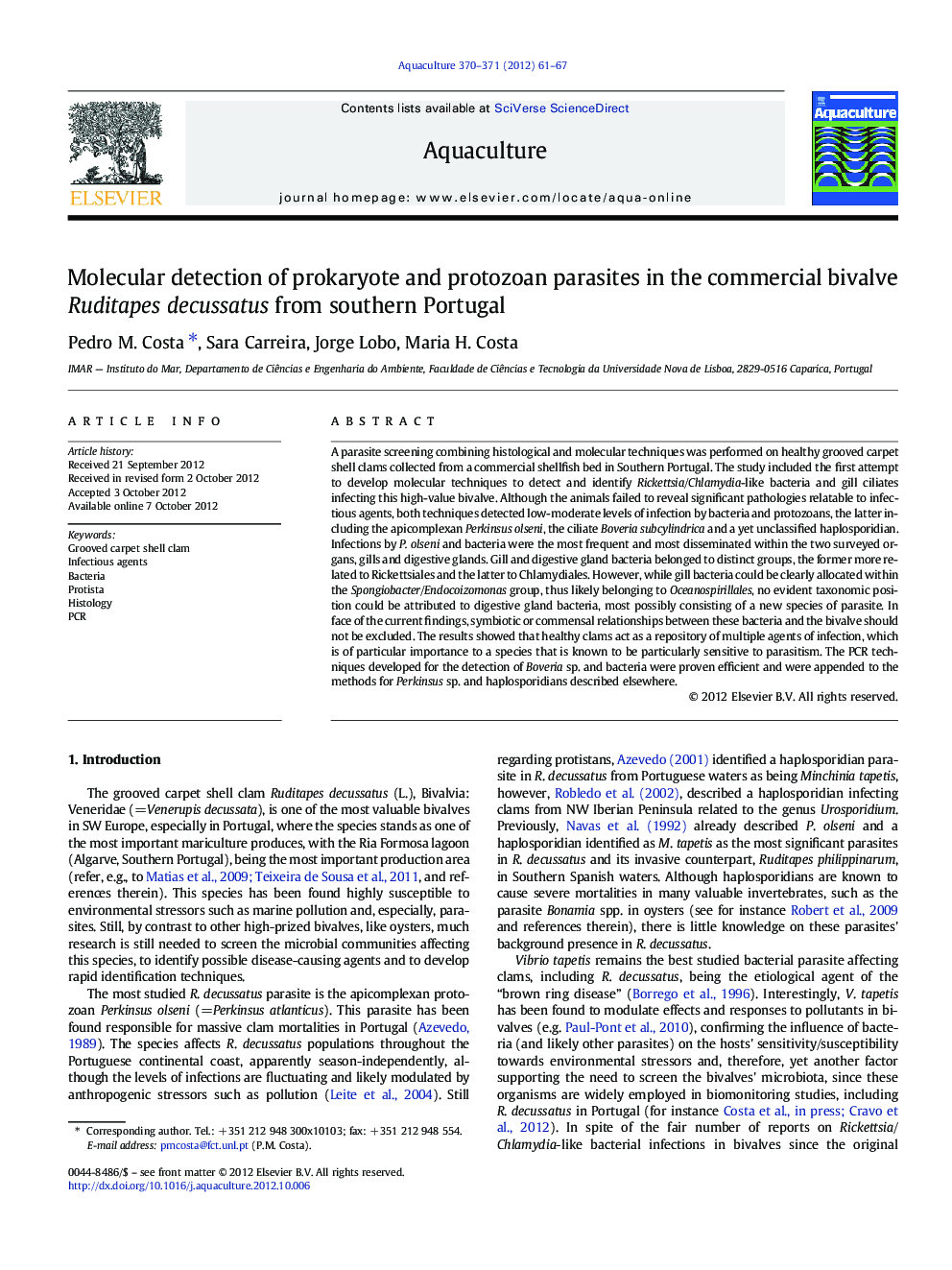| Article ID | Journal | Published Year | Pages | File Type |
|---|---|---|---|---|
| 2422247 | Aquaculture | 2012 | 7 Pages |
A parasite screening combining histological and molecular techniques was performed on healthy grooved carpet shell clams collected from a commercial shellfish bed in Southern Portugal. The study included the first attempt to develop molecular techniques to detect and identify Rickettsia/Chlamydia-like bacteria and gill ciliates infecting this high-value bivalve. Although the animals failed to reveal significant pathologies relatable to infectious agents, both techniques detected low-moderate levels of infection by bacteria and protozoans, the latter including the apicomplexan Perkinsus olseni, the ciliate Boveria subcylindrica and a yet unclassified haplosporidian. Infections by P. olseni and bacteria were the most frequent and most disseminated within the two surveyed organs, gills and digestive glands. Gill and digestive gland bacteria belonged to distinct groups, the former more related to Rickettsiales and the latter to Chlamydiales. However, while gill bacteria could be clearly allocated within the Spongiobacter/Endocoizomonas group, thus likely belonging to Oceanospirillales, no evident taxonomic position could be attributed to digestive gland bacteria, most possibly consisting of a new species of parasite. In face of the current findings, symbiotic or commensal relationships between these bacteria and the bivalve should not be excluded. The results showed that healthy clams act as a repository of multiple agents of infection, which is of particular importance to a species that is known to be particularly sensitive to parasitism. The PCR techniques developed for the detection of Boveria sp. and bacteria were proven efficient and were appended to the methods for Perkinsus sp. and haplosporidians described elsewhere.
► Healthy Ruditapes decussatus may be co–infected by different microorganisms. ► Gill and digestive parasites were detected by PCR and histological techniques. ► Perkinsus sp. and bacteria were the most common and disseminated parasites. ► Pathogenic effects of the gill–infecting ciliate Boveria sp. could not be determined. ► Gill bacteria relate to Spongiobacter and Oceanospirillales.
